Opinion
Early Childhood Education : Need of the Hour
Industry experts discuss the challenges and desirable improvements in Early Childhood Education in India
Published
6 years agoon

Industry experts discuss the challenges and desirable improvements in Early Childhood Education in India:
Smriti Agarwal
Senior Headmistress, Podar Jumbo Kids Powai
Is the setting of certain quality standards for pre-schools feasible in India?
Setting certain standards for preschools is definitely feasible in India. With all her diversity, demographic, cultural and financial differences, India can still regularise certain quality standards such as hygiene, safety, nutrition and well-being of children. Whether it is an anganwadi or a high-end preschool, basic standards can be set, audited and maintained if we take it up seriously.
Should teachers undergo a separate training system to deal with children in this age category?
Teachers are the hands which sculpt the soft mud into beautiful, desirable and successful sculptures to be proud of. If a sculpture/ artist/ doctor/ surgeon needs to undergo specialised education and training to be a master of their craft or to save lives, how can teachers not require specific, specialised and separate training to handle the age where the human brain is developing to its ultimate potential? We have to look into the training of preschool teachers very scientifically and organically.
How can we improve the quality of Early Childhood Education in India?
We can improve the quality of Early Childhood Education by first acknowledging the need and importance of Early Childhood Education. Only once we understand its importance and attach certain value to it, will we look at investing in it and making it beneficial and a must for each and every child.
What can be done to protect young children from being victims of molestation?
To protect children from molestation we have to understand two basic formulae which are; children have to be taught and sensitised towards good and bad touch from an early age along with equipping them with the knowledge of what do in which situation. Secondly, the trust factor has to be reviewed. Children by nature are curious and trust easily. Along with caretakers and adults of the house, children should know who is trustworthy. Most of the time, it is a family member, neighbour, help at home or a known person who is the molester.
How well-informed are parents in India about the importance of Early Childhood Education compared to other countries?
Awareness is there in India too, but maybe due to our vast diversity, the percentage is lesser than other countries. What India lacks is not only awareness but the understanding of Early Childhood Education. We have to know that Early Childhood Education is not a stepping stone for primary school but an experience and stimulus to develop skills and intelligence for life. It is not a preparatory school but a school for life.
What do you think are the main concerns and challenges facing ECE in India?
According to me, one of the main concerns and challenges ECE is facing in India is the lack of a separate governing body for ECE.
ECE cannot come under education or the Women and Child Development ministry. It requires a body which is made up of ECE professionals, who understand the needs, seriousness, issues and requirements of ECE. A separate ministry which understands the training, curriculum, age-appropriate development and developmental milestones in the early years. All concerns and challenges of safety, security, hygiene, curriculum, assessments and stress in early years can be dealt with if we have norms and regulations for ECE. Proper training and guidance should be given to preschool owners and teachers. If stakeholders can realise that this is not just a business but an extremely sensitive responsibility which is shaping the future then maybe the concerns can be addressed and challenges can be met.
Kaiser Ahmed
Orange International Preschool
Is the setting of certain quality standards for pre-schools feasible in India?
Yes, it is so important and it needs to be set up. Basic quality standards in pre-schools will be feasible as long as parents are informed about the advantages of such standards. The prerogative is to be sincere and well-planned in the implementation of quality standards.
Should teachers undergo a separate training system to deal with children in this age category?
The preschool age is the most important age and a qualified teacher in terms of experience and training can play a vital role in nurturing the kids at such a juncture. The government as well as some reputable preschools must take a call regarding this issue. Appointing a teacher without basic ECE experience can be a big mistake sometimes.
How can we improve the quality of Early Childhood Education in India?
There is lack of knowledge and awareness among masses about ECE. A nation-wide campaign needs to be started about the importance of ECE. Expert committees need to be set up to monitor the functioning of pre-schools. Parents need to be involved in certain school and home activities. Videos and short movies of perfect implementation of Early Childhood Education in other countries need to be shown and circulated.
What can be done to protect young children from being victims of molestation?
A proper and well-versed Do and Don'ts list needs to be implemented in schools, public places, at homes and they need to be evaluated from time to time.
Strict punishments for offenders and a fast-track legal course may definitely give some good results.
How well-informed are parents in India about the importance of Early Childhood Education as compared to other countries?
In India, most parents do not know the importance of ECE. Most parents still consider preschool as a creche.
What do you think are the main concerns and challenges facing ECE in India?
The main challenge is the ignorance from the government in recognising that ECE has an important role in imparting education, non-availability of trained staff and ignorance of parents.
Sonia Chugh
Director, Happy Minds International
Is the setting of certain quality standards for pre-schools feasible in India?
Why not? There are many such bodies available abroad. Private preschools are free to adapt and implement. Happy Minds International is using guidelines of NAEYC (National Association for the Education of Young Children) since the last seven years.
But surely, it can be expected from a government balwadi.
Should teachers undergo a separate training system to deal with children in this age category?
I definitely think, yes.
How can we improve the quality of Early Childhood Education in India?
We should have the standard guidelines for preschools for the nation, which can be adapted from already proven successful bodies for curriculum and teachers.
For space and infrastructure, minimum requirements standards, should be setup as a part of the guidelines.
What can be done to protect young children from being victims of molestation?
Education and intervention are the key. It should start from home, with the support of parents. Transparency should be maintained by all schools, where parents should have all rights to be a part of it.
How well-informed are parents in India about the importance of Early Childhood Education compared to other countries?
Early Childhood Education for majority of the parents means reading, writing and competing at an early age.
They don't understand that early childhood care is about developing life skills. It's socio-emotional development which takes place first, which is not understood by many.
What do you think are the main concerns and challenges facing ECE in India?
Awareness for the requirement of a body to set standards is missing. Each and every pre-primary should ideally first register with a standard body. Parents should know that such guidelines exist.
Rita Bose
Disharee Montessori House
President, Montessori Association of Calcutta
Is the setting of certain quality standards for pre-schools feasible in India?
Yes
Should teachers undergo a separate training system to deal with children in this age category?
Yes
How can we improve the quality of Early Childhood Education in India?
a) Fully trained adults for that age group
b) An environment (room, furniture, toilets) suitable to them
c) Working material should concentrate on hand-eye coordination. More material offered to the hands eg. plasticine
d) Less interference of adult while child is working
e) Once material is presented to the child let him/ her select what they want to work with. Let the child repeat as many times as he/she wants
f) You observe while the child absorbs
What can be done to protect young children from being victims of molestation?
Stress the use of NO to the child for certain actions of adults, things offered by unknown persons. To be wary when an unknown person says that ‘Your mother has sent me to take you’.
How well-informed are parents in India about the importance of Early Childhood Education compared to other countries?
Parents are not so well informed and one needs to spread the message.
What do you think are the main concerns and challenges facing ECE in India?
a) Parental ignorance
b) Reluctance of parents to recognise any problem in the child – physical, intellectual, mental or social
c) Availability of correct environment and qualified adults
Santwana Basu
Casa Dei Bambini, Bhowanipore
Is the setting of certain quality standards for pre-schools feasible in India?
In West Bengal, this is feasible only for private schools. For government schools and NGOs, it will be difficult.
Should teachers undergo a separate training system to deal with children in this age category?
Of course! A teacher should have a proper training at least for a year and some work experience.
How can we improve the quality of ECE in India?
We are moving towards modernisation. Tomorrow's children have to face changes and challenges. I feel that Vedic mantra chanting is important in a simple form and it should be inculcated in ECE from the beginning
What can be done to protect young children from being victims of molestation?
An adult should be taught how to handle children through workshops. Similarly, children should be given certain lessons on what is good touch and bad touch.
How well informed are parents in India about the importance of ECE compared to other countries?
In larger cities, parents are better aware of ECE but the awareness has not reached the suburbs and rural areas yet.
What do you think are the main concerns and challenges facing ECE in India?
In West Bengal, people are not aware of the importance of foundation programmes for Early Childhood Education. Over the past decade, the unfortunate reality is that the income gap has widened more between the low poverty group of people. So they do not give enough attention for giving readiness or awareness programme for pre-school.
Bela Kotwani
Cosmikids International
Is the setting of certain quality standards for pre-schools feasible in India?
Feasibility is a by-product of diligent curriculum curation and orchestration. A suggestion is to assign logistic management to a non-government entity funded with government aid and accountability shared by government and the assigned entity.
Do you think teachers should undergo a separate training system to deal with children in this age category?
A distinctive training for this age group is not only recommended but must be taken into serious consideration as they are the most formative years of a child’s life.
How can we improve the quality of Early Childhood Education in India?
Ordinance via the above recommended non-government entity must be created and decorum must be inspected consistently.
What can be done to protect young children from being victims of molestation?
Indian families are traditional and religion-based which contributes to a strong foundation but on the flipside makes parents timid about having difficult conversations with children. This reservation proves detrimental to a child facing the outside world. Predatory behaviour, incest, molestation are difficult topics. It’s our reaction that gives negative or positive power to a conversation. A neutral and objective conversation with our children at four years of age and regularly thereafter, will make a difference. Let’s not leave this task up to educators and law makers, let’s take care of it at home.
How well-informed are parents in India about the importance of Early Childhood Education compared to other countries?
I think a glimpse of awareness can be seen, however a tendency to have a herd mentality in following the West more for style and elitist recognition is evident. There is a need to stick to our roots, but develop our educational structure for global awareness.
What do you think are the main concerns and challenges facing ECE in India?
Standardised training, integrity of curriculum, increased parent guilt resulting in trying to parent remotely resulting in a teaching faculty that is caught between ‘a rock and a hard place’ trying to please the parents while maintaining the integrity of education.
Diana Tyagi
Podar Jumbo kids
Is the setting of certain quality standards for preschools feasible in India?
In my opinion, setting quality standards for preschools in India will not be feasible unless we overcome hindrances such as lack of strong leadership, lack of safe orderly classroom equipment and teachers who will focus on the basics of curriculum not having high expectations that actually over exceed the students potential. Moreover, poor pupil-teacher ratio is also a significant obstacle in India, along with lack of constant monitoring via assessment and feedback, coupled with lack of teacher quality (as in my opinion formal qualifications cannot be substituted by lack of passion).
Should teachers undergo a separate training system to deal with children in this age category?
The education sector is a very dynamic sector and a good teacher needs to be constantly updated with best practices across the world which means re-evaluating and reflecting ones pedagogical skills through professional development and training. After all, at the end of the day a teacher too is a human being and most of her teaching practices and beliefs stem from her own experiences. The need to transform such existing beliefs requires redesigning of professional development modules designed in such a manner that they infuse theory sessions and also focus on generic skills.
How can we improve the quality of Early Childhood Education in India?
As there is no single definition for quality, two principles characterise quality in Early Childhood Education. The first identifies the learner’s cognitive development as a major objective of the educational system and the second emphasises the role of education in promoting values and attitudes and nurturing a creative and emotional development. We need to start with learners ie. those individuals with different attitudes in learning styles having personal attributes influenced by their home and social backgrounds. Thus the learning environment needs to be inclusive thereby building on the strength of the learners. Secondly, we need to improve teaching and learning which means updating the curriculum content by making teaching methods more effective paying greater attention to factors like the language of instruction, regular timely reliable assessments and lastly by paying great attention to policies for selecting, training, supporting, deploying and rewarding of teachers.
What can be done to protect young children from being victims of molestation?
Most offenders are known to the child or the family and can sometimes even be family members or relatives. It is important to teach children about good touch and bad touch, educate them that no one has the right to touch their bodies. Similarly, we need to even teach them the right to privacy of other people. It’s very important that no secrets be kept between parent and child and the child should be made comfortable to talk openly to the parents on any issue in this regard. The child should be made aware of special gifts, toys or special outings offered suspiciously by any adult.
Also, when a parent enrols the child in the school or a daycare they should be very clear for opting for an organisation that that believes in an ‘open door policy’ and they should regularly monitor and participate in the child’s school activities whenever possible. Constantly sharing of news items and published reports of child sexual abuse with the child is a great way to initiate discussions of safety. Importantly, any child discussing history of sexual abuse should be heard carefully and the disclosure should be taken very seriously and not discarded, as very often children are not believed, particularly if the perpetrator is a family member.
How well informed are the parents in India about the importance of Early Childhood Education compared to other countries?
Parents in India are unaware of how crucial Early Childhood Education is in helping the child achieve not only ‘school ready status’ but the child’s life outcomes in terms of health and income levels. Unfortunately, private sectors offering so many standalone playschools are entirely unregulated with rudimentary understanding of children’s development. Indian parents’ aspirations differ from parents of other countries, once they make the preliminary investigations regarding the teacher – child ratio, fee structure, enquiries regarding basic educational philosophy or how discipline will be handled they pay up and feel their job ends there. Sadly, parents are completely unaware about the brain development being the highest during the first four years of life.
What do you think are the main concerns and challenges facing ECE in India?
In my opinion, one of the main concerns and challenges facing ECE in India today is the fact that full and equal access and achievement in basic education of good quality is lacking. Secondly, the professional status of teaching is at an all-time low and teaching is not considered as one of the most sought-after careers in India. Moreover, the financial compensation angle is deplorable as it is a highly underpaid job resulting in the profession being dominated by women, thus we see less males preferring to be teachers. The ongoing commercialisation of education results in ‘the modern temples of education’ – with infrastructures equivalent to a five-star resort, classrooms today with air conditioning in them as well as in the buses used to commute to and fro. The lack of intellectual liberty and freedom is what teachers miss in this day and age in their profession which ends at curtailing their motivation to learn, innovate and update their practices.
Natasha Baruah
Globe Tot'ers – A Birla Preschool
Is the setting of certain quality standards for pre-schools feasible in India?
A well research centralised curriculum with an integrated teaching approach based on the fundamental principles of education proposed by UNESCO i.e. Four Pillars of Education: Learning to be, Learning to do, Learning to know and Learning to live together will definitely set a quality standard in the preschools of India. The value of setting standards will be possible when we recognize and accept that Early Childhood Education is a vital developmental need for all the children and that every child has a right to equitable quality education.
Should teachers undergo a separate training system to deal with children in this age category?
The focused trainings will help the teachers to enhance their knowledge, the scientific approach to teaching, understanding the teaching pedagogy, child psychology as well as develop enthusiasm and passion for teaching the children. Communication skills of the teacher are very important as it creates effective difference in the child’s life. It is essential to target classroom experiences with hands-on learning guidelines for teachers to ensure learning is happening in the classroom. Therefore, a separate training system will definitely help the teachers to focus on the needs of a particular age group.
How can we improve the quality of Early Childhood Education in India?
We can improve the quality of Early Childhood Education in India by developing and following a suggestive developmentally age appropriate activity based curriculum that also highlights the various skills and Meta skills the child needs to acquire. Regular training workshops for teachers will help them to enhance their communication as well as enhance their teaching skills. Involvement of family and community through Early Childhood Education forums will also help to educate the people about the vitality of the early years’ education in a child’s life.
What can be done to protect young children from being victims of molestation?
The following can be done to protect young children from being victims of molestation:
a. A trusted adult supervision is required both in case of a girl as well as a boy.
b. In today’s world our lives have become dependent on support staff due to our busy schedules but it is very important that while appointing them we must do proper background check supported by a police verification. Also speaking to the past employer about them if possible, may help before recruiting them.
c. The children should not be left unsupervised. If caretakers are in-charge of the child, strict rules must be shared with them. However, a vigilant eye and regular monitoring will help to prevent accidents.
d. Teaching about body safety to the children through good touch and bad touch is very important. It is also very essential to teach about the people who are in their safe circle for e.g. father, mother, teachers etc. and shout for help if required when they experience any discomfort.
e. Regular sessions with parents to create awareness need to be conducted for the same.
How well informed are parents in India about the importance of Early Childhood Education compared to other countries?
The focus of parent’s in India from a young age of their child is on the academic progress of the child. Therefore, due to the lack of proper knowledge and confidence of the parents on the holistic education, the importance of Early Childhood Education as compared to other countries is ignored. Surely and steadily the awareness is increasing due to social media and other resources. The parent of today is looking for schools which provide more experiential learning with understanding rather than rote learning without understanding.
What do you think are the main concerns and challenges facing ECE in India?
Lack of awareness of the importance of ECE is the main concern and challenge. The organizations promoting ECE are non-affordable for the people with low average earnings. The initiative by the Government of India in creating widespread awareness as well as taking up intensive teacher training programmes will help the country to reach and preach the Early Childhood Education sector.
Kausar Ladiwala
Globe Tot'ers – A Birla Preschool, Jubilee Hills and Gopanpally
Is the setting of certain quality standards for preschools feasible in India?
Yes, surely. The early years of education are the building blocks of a child’s personality. With time, we have seen the cognitive domain of children growing, therefore it becomes essential to set a standard of quality in order to ensure uniformity. Young children learn at different rates across the various stands of their development and not all children master skills and content within an area in the same order therefore setting a quality standard becomes important for achieving skills, acquiring knowledge and developing positive attitudes.
The current curriculums that are being implemented in all preschools in India are meeting the latest trends in curriculum development, that have been designed after extensive research in various domains of neuroscience.
Should teachers undergo a separate training system to deal with children in this age category?
Yes. We think teachers should undergo a separate training system to deal with children in this age category. This will provide teachers with a greater chance of success in their professions. It will provide them with knowledge, experience and the methods to deal with a variety of situations that commonly arise in a classroom. Considering the challenges teachers face in the classroom with children from diverse background, abilities and potential, it becomes essential for teachers to undergo training in order to tackle issues with ease. While all teachers experiment with new lessons and techniques from time to time, teachers without proper training find themselves learning by ‘Trial & Error’. This experimenting comes at the cost of student education.
How can we improve the quality of Early Childhood Education in India?
Use observation and assessment to support every child’s needs across all developmental domains to ensure growth. Create a link between assessment and planning. Create a culture of continuous quality improvement. Focus first on children’s safety, health and happiness.
How well informed are parents in India about the importance of Early Childhood Education compared to other countries?
In India, till the late ’90s parents sent their children to school at the age of four years. They approached K-12 schools of reputation, mostly in academics and ensured that their child got admission from LKG and did not have to worry till the child finished class 12. The first three years of the child’s life was spent at home with the mother, mostly playing. With the arrival of new millennium, there was a visible change in the mind-set of the parents, especially in the metro cities. The new age parents and parenting style had arrived big time in India. This was mostly because of the IT sector development, as the working mothers got an opportunity to research, analyse and discuss about the various options available for schooling her child and provide the best Early Childhood Education. Indian parents have become more aware of the importance of Early Childhood Education in recent times and are almost at par with the parents of the West. This has been possible due to the influence of the Western world, as a result of travel due to work or pleasure. Many eminent educationists from India have visited schools across the world and have adopted their best practices here.
What can be done to protect young children from being victims of molestation?
Some measures to be taken to protect young children from being victims…
a. As a part of curriculum, rhymes on molestation should be a part of the programme, in order to create a sense of awareness among children of that age group.
b. During circle time, safety rules and methods should to be taught to the children. (Good touch and bad touch)
c. Developing a sense of equality for girls and boys.
d. A kid to kid guide to keep private parts private.
e. Relevant books to be kept in the reading centre – safe touch education books, your body belongs to you, yell and tell, some parts are not for sharing etc. f. Documents submitted during recruitment of staff (Teaching/Non-Teaching) have to be verified and rectified.
g. Seminars and workshops on child’s molestation to be conducted for parents and staff (Teaching/ Non-Teaching).
What do you think are the main concerns and challenges facing ECE in India?
The challenges faced by ECE in India are:
Standardisation of curriculum: The focus is mostly on academic readiness rather than catering to overall child development or cognitive development. Paying equal attention to life skills, and offering fun based exploratory learning activities to the child during these formative years is equally challenging. Moreover, the curriculum needs to be designed in such a way that a child has a smooth transition to the main school. Relevant skills like communication,
interpersonal, research, independent thinking need to be enhanced too.
Lack of trained faculty: Many states of India where, institutions of teacher’s education are not widely present, availability of trained and experienced teachers are limiting deficits. Schools are therefore, forced to hire lesser qualified teachers, which in turn affects the quality of teaching.
Parents’ concerns: A lot of parents have concerns regarding the right age for admission, methodology and choosing a school. Due to nuclear families parents also do not have anybody to guide them on dealing with the children. Onus then comes on Early Childhood educators to do the needful.
Issues with language: India being a diverse country has many languages. Getting teachers to understand and communicate in their mother tongue and yet teach in an official language is a difficult task.
You may like
-


Remembering Kargil Vijay Diwas: A Lesson in History, Sacrifice, and Peace for Our Children
-
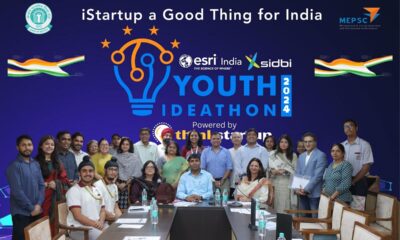

Youth Ideathon 2024: CBSE Launches India’s Biggest Entrepreneurship Competition for School Students
-
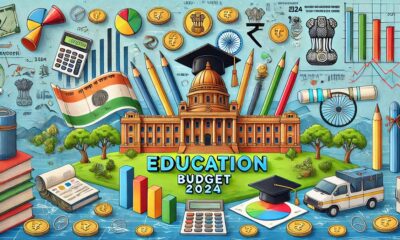

Internships in Top 500 Companies, Rs 5k Stipend for Youth: Key Highlights from the Education Budget 2024
-
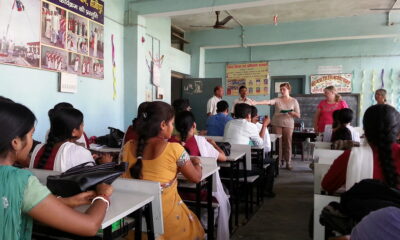

Higher Education Enrollment Jumps To Nearly 4.33 Crore In FY22, Up 26.5% From FY15
-


UNESCO Report Highlights Need for Boost in India’s Upper Secondary Education
-


Embracing Emojis in the Classroom: A Fun and Polite Approach to Modern Learning
-
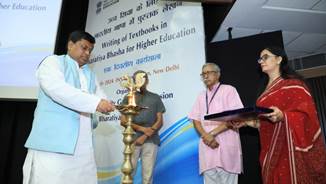

Workshop on Writing Textbooks in Bharatiya Bhasha for Higher Education Inaugurated by Dr. Sukanta Majumdar
-


Nurturing Natural Skills: Empowering Youth for the Future
-


Global Education Crisis Demands Immediate Action, Says UN Secretary-General
-


Celebrating Nikola Tesla: A Beacon for Transforming Education
Inspiration
Remembering Kargil Vijay Diwas: A Lesson in History, Sacrifice, and Peace for Our Children
Published
19 hours agoon
July 26, 2024
Today is the Kargil Vijay Diwas, a day of victory for the Indian armed forces celebrating 25 years of victory in the Kargil War of 1999. This day represents pride and strength of the nation, as well as a reminder of the price that is paid in any armed conflict. While appreciating the courage and the efforts of our soldiers on this day, it is equally important to explain its importance to our children.
Understanding the wars of the past is essential for the younger generation. The Kargil War was a high-altitude conflict between India and Pakistan, fought in the treacherous terrain of the Kargil district in Jammu and Kashmir. Despite the harsh conditions and the strategic disadvantage, the Indian Army emerged victorious, reclaiming the occupied territories. This victory, achieved through immense bravery and sacrifice, is a testament to the indomitable spirit of our armed forces.
It is always good to celebrate victories in war as a sign of prowess, but it is equally important to pass this message to the young: War should always be the last solution. These depictions of bravery during the Kargil War should evoke feelings of respect and gratitude for those who sacrifice their lives to secure our freedom and security. However, it should also highlight the importance of peace and non-violence. India’s history is rich with examples of resolving conflicts through diplomacy and non-violence, a legacy of ahimsa championed by leaders like Mahatma Gandhi.
Schools play a pivotal role in shaping the perspectives of young minds. By incorporating lessons on the Kargil War and other significant historical conflicts, educators can instil a deeper appreciation for the freedom and security that we often take for granted. These lessons should not only be of triumphs in battle; they should also include the destruction and suffering that war entails. This way, students will be able to appreciate the efforts of the soldiers and have a deeper respect for the armed forces and their principles.
However, it is also important to complement these stories with the ones of peace and diplomatic victories. Explaining India’s policy of non-violence and the use of diplomacy in the conflict can help children learn about the benefits of living in harmony with others and the effectiveness of negotiations over fighting. This dual approach makes sure that while we are rejoicing and acknowledging our champions, we are also promoting peace and proper utilization of authority.
Therefore, Kargil Vijay Diwas is not only a day of victory and celebration but also a day when our children should be made aware of the bitter truth of war and the need for peace. In this way, we can raise a generation that appreciates freedom, honors the soldiers’ sacrifices, and aims at a society where people solve their problems with understanding and not violence.
Education
Embracing Emojis in the Classroom: A Fun and Polite Approach to Modern Learning
Published
1 week agoon
July 18, 2024
Today, on World Emoji Day, let’s celebrate these small, expressive icons that have become an integral part of our digital communication. While some argue that emojis threaten the sanctity of language, there’s a fun, quirky side to these tiny pictures that can actually enhance classroom interactions, making them more relevant, polite, and engaging.
Remember the thrill of getting a gold star on your homework? That star wasn’t just a sticker; it was a symbol of achievement, recognition, and encouragement. In many ways, emojis serve a similar purpose. They convey emotions and reactions succinctly and can add a personal touch to written communication. So, why not harness the power of emojis to make our classrooms more dynamic and student-friendly?
1. Enhancing Feedback: Traditionally, teachers use phrases like “good job” or “well done” to praise students. But imagine the added excitement if those words were accompanied by a clapping hands emoji 👏, a star ⭐, or even a trophy 🏆. Such visual cues can amplify the impact of positive feedback, making it more memorable and encouraging for students. Conversely, gentle reminders can be softened with a thoughtful emoji. For instance, a neutral face 😐 or a thinking face 🤔 could be used to indicate that a student might need to revisit a particular concept without causing undue stress or discouragement.
2. Encouraging Polite Communication: Emojis can also help maintain a polite and respectful tone in classroom discussions. For example, if a student disagrees with a peer, using a handshake emoji 🤝 or a smiling face 😊 can convey their differing opinion respectfully. This approach can foster a culture of kindness and consideration, crucial for productive and positive learning environments.
3. Making Learning Fun: Integrating emojis into lesson plans can make learning more interactive and enjoyable. Teachers can create emoji-based quizzes where students match emojis to historical events, literary characters, or scientific concepts. For example, an apple 🍎 and a book 📖 could be used in a quiz about famous inventors, prompting students to guess Isaac Newton. These activities not only make lessons more engaging but also encourage creative thinking.
4. Bridging Language Gaps: In classrooms with diverse linguistic backgrounds, emojis can serve as a universal language, helping bridge communication gaps. A thumbs-up 👍, a heart ❤️, or a smiling face 😀 can convey appreciation and support across different languages, fostering inclusivity and mutual understanding.
5. Digital Citizenship: As students increasingly navigate the digital world, teaching them about appropriate emoji use is crucial. Educators can incorporate lessons on digital etiquette, highlighting how emojis can enhance communication when used appropriately but can also be misinterpreted or cause misunderstandings if overused or used incorrectly.
6. Custom Emojis for Classroom Culture: Teachers can create custom emojis that reflect their unique classroom culture. For instance, a specific emoji could symbolize a class mascot, a special event, or a unique classroom achievement. This personal touch can strengthen the sense of community and belonging among students.
In conclusion, emojis are not a threat to language; rather, they are an evolution of it. They offer a unique and fun way to enrich classroom communication, making feedback more impactful, interactions more polite, and learning more enjoyable. So, on this World Emoji Day, let’s embrace these expressive icons and unlock their potential to make our classrooms brighter, kinder, and more engaging places to learn. 🌟🎉📚
Edutainment
Navigating Teen Emotions: The Essential Lessons of ‘Inside Out’
Published
4 weeks agoon
June 27, 2024
Amongst all other animated movies, ‘Inside Out’ not only stands out due to its new way of telling stories but also for its profound study into the human mind. It was a 2015 release from Pixar Animation Studios that looked at emotions in a very complicated manner, focusing on how an 11-year-old girl called Riley operates internally. As I saw the sequel “Inside Out 2,” in a theatre full of parents, kids, and young adults, it is important to revisit what we learnt in the original film and why it should be watched by teenagers and their parents.
“Inside Out” personifies five primary emotions: Joy, Sadness, Anger, Fear and Disgust. These are the characters that walk with Riley through life’s difficulties especially after her family moved to another city. This movie ingeniously demonstrates this emotional rollercoaster which accompanies such major changes making it relatable for children as well as adults.” Inside Out” helps adolescents who often cope with multiple emotional issues identify and understand that they are real.
Teenagers usually feel overwhelmed by growing up’s flood of emotions. The transformations accompanying the shift from childhood to adolescence are generally confusing and hard to express in words. “Inside Out” addresses these changes by showing that it’s normal to experience a wide range of emotions, sometimes all at once. Riley’s journey teaches teenagers that it’s okay to feel Joy, Sadness, Anger, Fear, and Disgust; these emotions are all part of the human experience.
Among the most touching messages of the film is that one must accept all the emotional states, not only positive ones. Joy, at first, tries to put Sadness aside and believes Riley should always be happy. Eventually however Joy realizes Sadness is vital for Riley’s emotional health. This could be a great revelation for teenagers who are mostly pressured to maintain an image of being ever-happy. “Inside Out” teaches them that it’s okay to feel sad and that acknowledging and expressing this emotion is a crucial part of emotional well-being.
As for parents, “Inside Out” serves as a gentle yet powerful reminder on why empathy and open communication are important in parenting. With our curriculum known for its single-minded commitment towards good grades and high moral standards, mental health has often been pushed aside. This movie indicates that one way of doing this is by understanding the children’s emotions’ needs. Parents can watch Inside out with an aim of learning how they can create an atmosphere where their children will have freedom to express themselves without fear.
The characters’ interactions in Riley’s mind might help parents understand how complex their teenager’s emotional world can be sometimes. As soon as they see that each emotion contributes to Riley’s overall wellbeing, parents may grow more patient and empathetic toward their children’s emotional struggles. This understanding is pivotal in nurturing a child’s emotional health and building a strong, supportive relationship.
“Inside Out 2,” introduces new emotions like Anxiety, Envy, Ennui, and Embarrassment, and makes it clear that the emotional landscape becomes more intricate as children grow into teenagers. The sequel delves deeper into the emotional challenges that accompany adolescence. A memorable scene from the upcoming film features Anxiety taking over from Joy, emphasising the need for more sophisticated emotions to navigate Riley’s more complex life. This transition is a stark reminder that growing up is not just about physical changes but also about evolving emotional needs.
One of the critical aspects of “Inside Out” and its sequel is the portrayal of anxiety. In the sequel, Anxiety explains that Riley’s life now requires more sophisticated emotions. This portrayal can help teenagers and their parents understand that anxiety is not inherently bad. Instead, it’s a natural response to challenging situations. The film can be an essential tool in discussing mental health issues like panic attacks, which are often overlooked in Indian communities.
By presenting anxiety as a part of Riley’s emotional toolkit, “Inside Out 2” can teach teenagers to listen to their inner voice and reassure themselves that everything will be okay, even in difficult situations. This understanding can help them develop healthier coping mechanisms and reduce the stigma associated with anxiety and other mental health issues.
Inside Out is more than just an animated film; it serves as an important resource for teenagers and parents alike. It allows viewers to have a nuanced understanding of emotions; stresses on embracing all feelings and assists them in becoming empathetic as well as encourages open communication. Now that Inside Out 2 has been released and is currently running at theaters across the country, this may be a good time to take the kids to watch the film or to revisit the original movie so that our kids and their guardians can watch it.
Knowledge
Navigating Future Horizons: The Imperative Need of Updated Career Counsellors in Indian Schools
Published
1 month agoon
June 12, 2024
In the evolving landscape of education, the role of career counsellors in schools has become increasingly indispensable. Today, as we stand on the cusp of technological advancements and globalization, the need for informed career guidance has never been more critical. This article delves into the necessity of updated career counsellors in Indian schools, shedding light on misconceptions, highlighting new-age career paths, and emphasizing the importance of equipping students with the requisite skills and knowledge for their future endeavors.
Misconceptions and Realities
One prevalent misconception is that career counselling is only necessary for high school students approaching graduation. However, career development is a lifelong process, beginning as early as childhood and continuing throughout one’s professional journey. By integrating career counselling into the curriculum from an early age, students can explore various interests, talents, and aspirations, thus making informed decisions about their academic and career paths. Another misconception revolves around the notion that career counselling is solely for students struggling academically or uncertain about their future. On the contrary, career counselling is beneficial for all students, regardless of their academic prowess. It helps students align their interests, skills, and goals with suitable career pathways, fostering a sense of purpose and direction.
New Age vs. Conventional Careers
The contemporary job market is witnessing a paradigm shift, with emerging sectors such as artificial intelligence, data analytics, and renewable energy gaining prominence. While conventional careers like medicine, engineering, and law continue to hold sway, the landscape is diversifying rapidly, offering a plethora of unconventional yet promising career avenues.
In this era of innovation and disruption, students must be exposed to a spectrum of career options beyond the conventional ones. From digital marketing and sustainability consultancy to content creation and app development, the possibilities are endless. However, navigating these uncharted territories requires expert guidance and up-to-date information, underscoring the need for informed career counsellors in schools.
The Crucial Role of Career Counsellors
Career counsellors serve as the bridge between students and their future aspirations. They possess the expertise to assess students’ aptitudes, interests, and personality traits, thereby recommending suitable career pathways. Moreover, they stay abreast of industry trends, market demands, and educational policies, equipping them with the knowledge to guide students effectively.
In the Indian context, where the education system is often rigid and rote-learning oriented, career counsellors play a pivotal role in challenging traditional mindsets and fostering a culture of innovation and exploration. By advocating for skill-based learning and experiential education, they empower students to embrace their uniqueness and pursue unconventional career paths with confidence.
The Need for Informed Career Counsellors
India’s demographic dividend, characterized by a burgeoning youth population, presents both opportunities and challenges. While the youth bulge holds the potential to drive economic growth and innovation, it also underscores the urgency of equipping young minds with the requisite skills and knowledge to navigate an increasingly competitive global landscape.
In this regard, informed career counsellors serve as catalysts for change, guiding students through the intricacies of career selection, course planning, and overseas education opportunities. They demystify the application and admission processes for prestigious institutions, provide mentorship for entrance exams, and facilitate internships and industry interactions, thereby nurturing well-rounded individuals poised for success.
As we march towards a future characterized by uncertainty and rapid transformation, the role of career counsellors in schools becomes paramount. By dispelling misconceptions, embracing new-age career pathways, and championing skill-based learning, they pave the way for students to embark on fulfilling and meaningful professional journeys.
In essence, investing in updated career counsellors isn’t just a necessity; it’s a strategic imperative for shaping the future workforce and fostering socio-economic development. As educational leaders, let us recognize the pivotal role of career counselling in shaping the destinies of our students and strive towards creating a generation of future-ready individuals equipped to thrive in the dynamic world of tomorrow.
Authored By-
Archana Singh
Principal, Sunbeam Suncity (School & Hostel),
Varanasi
Education
An Alarming Future: India’s Extreme Heatwaves and the Urgency for Environmental Education
Published
2 months agoon
June 5, 2024
As we mark World Environment Day, the searing heatwaves sweeping across India this year serve as a dire warning. The temperatures, reaching unprecedented highs, underline an urgent message: our current environmental trajectory is unsustainable. If we fail to act now, we won’t have the luxury of choosing to be climate activists or champions in a decade; we’ll be forced to address the catastrophic consequences of our inaction.
This year, India has experienced some of the hottest temperatures on record. From the arid landscapes of Rajasthan to the bustling streets of Delhi, the oppressive heat has not only caused widespread discomfort but has also had severe repercussions on public health, agriculture, and the economy. Heatwaves have become more frequent and intense, a stark indicator of climate change’s accelerating impact.
A Message from the Future
The extreme heat is a glimpse into a future where climate change dictates our way of life. If we continue to prioritize short-term development over long-term sustainability, we are setting the stage for a scenario where environmental degradation becomes irreversible. The deforestation, pollution, and rampant urbanization we often justify in the name of progress are, in reality, regressions. They are actions that are eroding the very foundation of our future.
Ten years from now, the choice to become a climate activist will no longer exist; it will be a necessity. Our children and grandchildren will inherit a world where survival might hinge on how well we manage the environment today. The trees we cut for new infrastructure projects are the same trees that could have mitigated flooding, reduced urban heat, and cleaned the air. True development cannot occur without sustainable practices at its core.
More Than Just Theory
Environmental studies should transcend the boundaries of theoretical knowledge. To cultivate a generation that values and protects the environment, we must embed practical environmental education into the curriculum. This means moving beyond textbooks and exams, and instead fostering real-world experiences and actions.
Schools should integrate activities like tree planting, waste management projects, and community clean-ups. Such hands-on experiences instill a deeper understanding and respect for the environment. Moreover, incorporating environmental ethics into daily school life can help students see the direct impact of their actions on the planet.
Films and Books for Environmental Curriculum
To enrich the curriculum, here are five films and books that vividly illustrate the importance of environmental conservation:
- Film: “An Inconvenient Truth” (2006)
- Al Gore’s documentary highlights the science of climate change and the urgent need for action.
- Book: “Silent Spring” by Rachel Carson
- This groundbreaking work raised public awareness about the dangers of pesticides and sparked the modern environmental movement.
- Film: “Before the Flood” (2016)
- Leonardo DiCaprio’s documentary showcases the impact of climate change across the globe and explores potential solutions.
- Book: “The Lorax” by Dr. Seuss
- A classic children’s book that tells the story of the environment through the character of the Lorax, who speaks for the trees.
- Film: “Our Planet” (2019)
- This Netflix series, narrated by David Attenborough, showcases the beauty of our natural world and the urgent need to protect it.
The extreme heatwaves in India are a clear, urgent call to action. We must rethink our approach to development and education, ensuring that environmental conservation becomes a core value. By integrating practical environmental studies into our education system and using powerful films and literature to inspire change, we can hope to create a future where true development is sustainable, and our children can live in harmony with the planet. On this World Environment Day, let’s commit to making these changes, for there’s no time left to lose.
Education
What It Takes to Be Well-Educated; Not Just Well-Read
Published
2 months agoon
May 28, 2024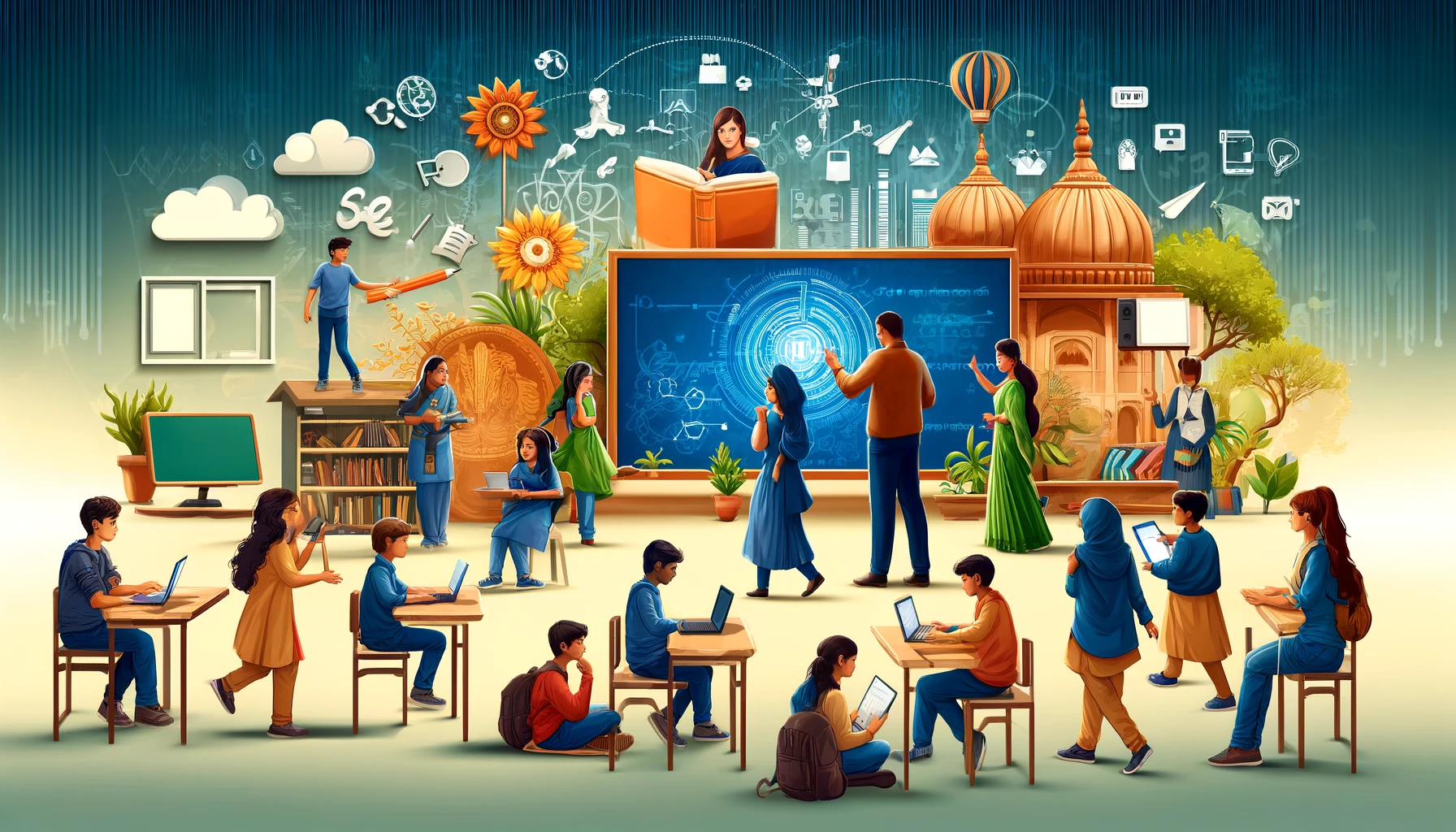
The need to bridge the gap between what should be and what’s being delivered in the school educational system in India is most severe than ever before. As we see the rise in the number of Indians as global leaders in the corporate, tech, art and political sector we must ask ourselves whether we are catering to the demand of 21st century and doing justice to our younger generation or not!
It won’t be an exaggeration to say that India is living in one of its best times in terms of industrial growth, demand of higher education and service sector, religious and spiritual awakening and humongous rise in the national infrastructure and the commitment to grow further can definitely be seen when 3.3 percent of total GDP has been outlaid for infrastructure in Union Budget 2023-24 but at the same time this peak also alarms the need to prepare thought leaders, logical/critical individuals, go getters and prepare the most efficient workforce for the years to come.
What we need to deliver to the younger generation along with the industrial and employable skill is the idea and importance of mental health, argumentative skills, decision making skill, communication skill and to summarize the contemporary demand in a single word is to be the ‘human’ first in a way that the almighty intended us to be i.e. just, fair, hardworking with balanced scientific temperament. Even World Health Organization expressed serious concern over mental health issue of adolescents by stating that globally, one in seven 10-19-year-olds experiences a mental disorder, accounting for 13% of the global burden of disease in this age group.
NEP 2020 points out several changes in the formal education policy right from the pre-school till the university space but the right steps for its most efficient implementation so as to achieve a holistic and comprehensive development is still a long way to go. As per the All India Survey on Higher Education 2019 report, India’s higher education sector consists of 3.74 crore students in nearly 1,000 universities, 39,931 colleges, and 10,725 stand-alone institutions. Thus, a countrywide implementation of this mega education policy is going to be a mammoth exercise involving multiple stakeholders at the state, district, sub-district, and block levels.
Change and regularly updating the curriculum, minimum standard maintenance of quality education, teachers training and uniformity amongst several state and national board are few urgent and at most necessary steps amongst other factors. And the functionaries of these changes aren’t just educational leaders and teachers but the parents and students themselves. They need to ask the right questions, consider all the factors such as time, investment and opportunities and be firm while saying a big NO to sub standard institutions which are just making a hole in their pockets in return of nothing more than a window dressing in the name of mark sheet and degree based system.
We have already achieved remarkable feet in terms of numeracy and literacy skills for foundation classes/toddlers, the Annual Status of Education Report says that in 2023, 73.6% of 14-18 year-olds could read a Class 2 level text, and arithmetically, in 2023, 43.3% of youth could do a simple (class 3-4 level) division problem; our graduates are breaking glass ceiling with every passing hour when it comes to innovation, design and product enhancement, Department for Promotion of Industry and Internal Trade (DPIIT) recognized 1,17,254 startups as on 31st December 2023 and as per the Economic Survey Report 2022-23 in 2022 alone, homegrown startups generated 2.69 Lacs jobs in the country.
With the rising trend of Ed-tech and content creation through media there is plethora of knowledge awaiting to be learned but international exposure, state of the art facilities and hefty charges alone cannot cater to the students’ needs but developing emotional quotient, awakening self awareness and the sense of integrity and service motive is what’s going to sustain the social ecosystem in a way which will result into an overall development of the younger generation thus achieving social, economical, political development and a level playing field for every opportunity that our beautiful world has to offer.
Our history has traditionally embraced the importance of building relationships with animals. From an animal’s loyalty to bravery, various instances have been highlighted in historical texts and scriptures (Mahabharata and Ramayana). Many children grew up listening to stories, stories of compassion; further encouraging them to experience the human-animal bond. But in recent years, as we witness an increase in animal cruelty and pet abandonment cases, compassion seems to be at a loss today.
According to the report findings by the Federation of Indian Animal Protection Organisations (FIAPO) and All Creatures Great and Small (ACGS), between 2010-2020, a total of 4,93,910 animals were victims of crimes committed by humans. Keeping in mind that many cases go unreported, out of the 720 documented cases of crime against street animals, 20 cases were of assault by children. With nearly 50% of India’s population under the age of 25, such revelations underscore the urgent need to cultivate empathy and compassion from a young age. Humane Education, an approach that cultivates children to be empathetic and compassionate not only towards fellow beings but also all sentient beings, is an important pillar of 21st-century sensibilities.
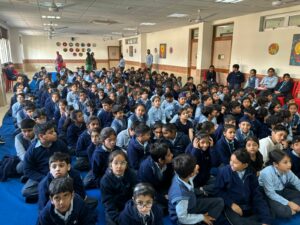
(Picture Credits: Peedu’s People)
“Children are human beings to whom respect is due, superior to us by reason of their innocence and of the greater possibilities of their future.” ― Maria Montessori
Founded in 2021, India Animal Fund (IAF) along with NGOs like Peedu’s People; are working to ensure wholesome child development through holistic learning for school children. For young children and students to make informed and ethical choices, through humane education sessions, we introduce them to this concept via experiential, learning, observational and application learning. “Along with our partner Peedu’s People, we have delivered over 250 sessions across India. Around 10K+ children were introduced to humane education and workshops reached over 55 schools. The next steps involve expanding the programme and integrating it into the NCERT syllabus for broader reach.” says Sandeep Reddy, COO – India Animal Fund (IAF). From environmental conservation to social justice, such initiatives are crucial for creating a sustainable and equitable society.
Another study from Science Directs indicates that children who exhibit cruelty towards animals may have witnessed or experienced family violence and are at risk of engaging in human-directed aggression during adolescence and adulthood. Implementing such programmes not only prevents violence, but also increases the likelihood of detecting and intervening early. Not only would it be beneficial for the children from K-12, if implemented in the school curriculum, via teacher training programmes, educators or schoolteachers can also be equipped with the tools and resources needed to integrate humane education into their teaching practices.
While we have animal protection laws in our country, this strategic investment may lead to a cornerstone of our educational system. By nurturing empathy and compassion among children today, we can empower the next generation to build a better world for all living beings, for them to navigate an increasingly interconnected and complex world.
Authored By-
Nidhi Gupta
Manager- Content and Communications,
India Animal Fund (IAF)
Education
Why Sex Education in Schools is a Battlefield: A Look into Recent Debates and the Path Forward
Published
2 months agoon
May 17, 2024
Sex education in schools has once again found itself in the eye of a political storm. In the UK, Prime Minister Rishi Sunak’s recent overhaul of sex education and gender identity teachings in England’s schools has sparked intense debate. As reported by CNN, Sunak’s administration claims the changes provide much-needed clarity, but critics argue they are politically motivated and detrimental to students’ wellbeing.
The Current Debate
The newly unveiled guidelines mandate that children cannot be taught sex education before the age of nine, with explicit discussions on sexual activity delayed until age 13. Additionally, the concept of gender identity is deemed “highly contested” and is to be excluded from the curriculum. Education Secretary Gillian Keegan emphasized that teachers should impart facts rather than push agendas, a statement that has further fueled the controversy.
Pepe Di’lasio, General Secretary of the Association of School and College Leaders, criticized the move as being driven by a “political agenda at the front of a campaign season.” He pointed out the lack of substantial evidence backing the changes, suggesting they are more about garnering votes than genuinely addressing educational needs.
The Politics of Sex Education
Sunak’s approach is seen by many as a bid to win over socially conservative voters ahead of an impending general election. This strategy has involved a series of divisive announcements, with sex education being the latest target.
Critics, including Paul Whiteman of the National Association of Head Teachers, argue that the rigid limits on discussions could drive students to seek information from unreliable sources. Sam Freedman, a senior advisor at the Ark education charity, echoed this sentiment, highlighting the educational value of discussing contested topics like gender identity in a balanced manner.
The Case for Comprehensive Sex Education
The debate over sex education isn’t limited to the UK. In India, where traditional attitudes often dominate, the need for comprehensive sex education is equally pressing. According to a 2022 survey by the Indian Journal of Community Medicine, only 20% of Indian adolescents reported receiving formal sex education. This gap leaves many young people ill-equipped to navigate their sexual health and relationships safely.
Sex education opponents often cite cultural and moral grounds, fearing that such education might corrupt young minds. However, evidence suggests otherwise. A UNESCO report from 2018 highlighted that comprehensive sex education can lead to delayed sexual initiation, reduced risk-taking, and increased use of contraception, thereby reducing rates of unintended pregnancies and sexually transmitted infections.
Breaking the Stigma
The stigma surrounding sex education often stems from misconceptions and a lack of understanding. Addressing these misconceptions requires a multi-faceted approach:
1. Parental Involvement: Engaging parents in the dialogue around sex education can help demystify the topic and alleviate fears. Schools should offer workshops and resources to help parents understand the curriculum and its benefits.
2. Teacher Training: Educators need robust training to handle sex education topics sensitively and effectively. This includes understanding diverse perspectives and being equipped to support students’ varied needs.
3. Evidence-Based Policies: Policymaking should be grounded in research rather than political agendas. Studies consistently show that comprehensive sex education supports better health outcomes. Policymakers must prioritize students’ long-term wellbeing over short-term political gains.
4. Community Engagement: Building community support for sex education involves transparent communication and collaboration with local leaders, healthcare professionals, and advocacy groups. Creating a community consensus can help overcome resistance and build a supportive environment for students.
A Path Forward
The controversy over sex education in schools highlights a broader issue: the tension between political agendas and educational integrity. While Sunak’s new guidelines may cater to a specific voter base, they risk undermining the comprehensive education that young people need to thrive.
In both the UK and India, breaking the stigma around sex education requires a commitment to evidence-based practices and an open, inclusive dialogue. By fostering understanding and addressing concerns head-on, we can create a more informed and healthier society.
As we navigate these debates, it’s crucial to remember that the ultimate goal of education is to equip students with the knowledge and skills they need to lead healthy, fulfilling lives. Let’s ensure that political motivations do not overshadow this fundamental objective.
(Inspired by recent analyses from CNN and BBC on UK Prime Minister Rishi Sunak’s new education guidelines)
References:
– Rob Picheta, CNN Analysis
– The Indian Journal of Community Medicine
– UNESCO Report on Comprehensive Sexuality Education (2018)
Education
Teaching Sensitivity to Kids in School: A Necessity for Today’s World
Published
2 months agoon
May 15, 2024
In recent years, instances of bullying, violence, and other harmful behaviours have alarmingly increased among young children. Various factors contribute to this troubling trend. The omnipresence of social media, exposure to violent content, familial discord, and the high-pressure environment of academic and extracurricular achievements are significant reasons. These influences create an environment where children may not develop the necessary empathy and understanding to coexist harmoniously with their peers.
Given this backdrop, it is crucial to emphasise the teaching of sensitivity to children in schools. Sensitising kids towards each other, society, animals, nature, and humans in general is not just beneficial—it is imperative for fostering a more compassionate and cohesive community.
The Importance of Sensitivity
Firstly, teaching sensitivity is essential to combat bullying and violence. When children are taught to understand and appreciate the feelings and perspectives of others, they are less likely to engage in harmful behaviours. Empathy and kindness can act as powerful deterrents against bullying. Moreover, children who are sensitive to the emotions of their peers can contribute to a supportive and inclusive school environment, where everyone feels valued and respected.
Furthermore, sensitivity towards society and the environment is crucial for nurturing responsible future citizens. Teaching children to care for animals, respect nature, and understand social issues instils a sense of responsibility and stewardship. This not only benefits the immediate community but also contributes to the broader goal of sustainable living and environmental conservation.
Implementing Sensitivity Education at the Grassroots Level in India
To effectively implement sensitivity education, a multifaceted approach is necessary, starting at the grassroots level. Here are several strategies that can be employed:
- Incorporate Sensitivity into the Curriculum: Schools should integrate lessons on empathy, kindness, and respect into the existing curriculum. Subjects like Social Studies and Environmental Science can include modules that teach children about the importance of sensitivity towards others and the environment. Stories, role-playing activities, and discussions can be powerful tools in this regard.
- Teacher Training and Development: Educators play a pivotal role in shaping the attitudes and behaviours of students. Providing teachers with training on how to foster empathy and sensitivity in the classroom is essential. Workshops and seminars can equip teachers with the skills and knowledge to create an inclusive and supportive learning environment.
- Extracurricular Activities and Clubs: Schools can organise clubs and activities that promote sensitivity. For instance, eco-clubs can engage students in activities like tree planting, waste management, and animal care, fostering a sense of responsibility towards nature. Similarly, social service clubs can involve students in community service projects, teaching them the importance of giving back to society.
- Parental Involvement: Sensitivity education should not be confined to the school environment. Encouraging parents to reinforce these values at home is crucial. Schools can organise workshops and provide resources to help parents understand their role in teaching empathy and kindness to their children.
- Creating a Safe and Inclusive School Environment: Schools should strive to create an environment where every student feels safe and valued. Anti-bullying policies, counselling services, and peer support programs can help achieve this. Additionally, celebrating diversity and promoting inclusivity through cultural events and awareness campaigns can enhance students’ understanding and appreciation of different perspectives.
Teaching sensitivity to children in school is not merely an optional add-on to education; it is a fundamental aspect of nurturing well-rounded individuals who can contribute positively to society. By addressing the rise in bullying and violence through empathy and understanding, we can create a more compassionate and harmonious community. Implementing sensitivity education at the grassroots level in India requires a collaborative effort from educators, parents, and the community. Together, we can ensure that our children grow up to be empathetic, responsible, and sensitive citizens, ready to make a positive impact on the world.
Education
Beyond Appearances: Prachi Nigam’s Triumph and The Pressures of Appearance-Based Bullying in Schools
Published
3 months agoon
April 29, 2024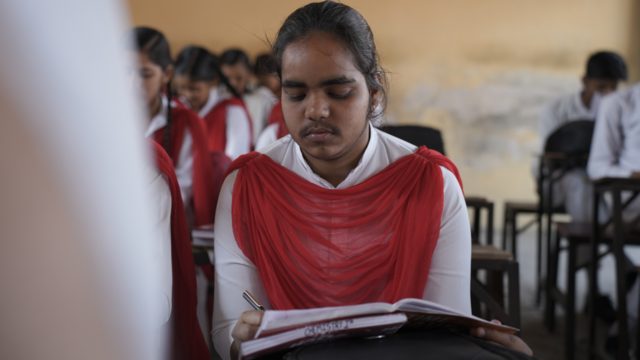
The news of Prachi Nigam, a diligent 10th UP Board Topper, unleashed a disturbing chapter in the history of our society. Despite her unquestionable academic talent being the main topic of a discussion it was superseded by the inappropriate emphasis on her appearance. These events clearly underline the intricate and destructive beauty standard that plague the learning institutions.
It perhaps resonates with the fact that, in the process, we form these gigantic LED screens of illusory beauty standards, which subsequently hover over our young, leaving long shadows behind their achievements. Even if they keep advancing up the ladder of academic strength, their way at the top is checked through the view of how attractive they are. The risk of humiliation due to poor marks and failing an exam is unavoidable. The true woe Prachi has is the desire for anonymity despite her impressive winning activities, which emphasises how emotional hearts of young people can be dysfunctional from such pressures.
Time has come for all of us, as a society, to shape direction which mostly depends on whether empathy has the right place in our classrooms or not. Let this be a lighthouse to the teachers to build suitable defences of comfort around the children thus, no kid should be caught hiding from scrutiny in the shadows. Teachers are doing not only a transmission of knowledge but also establishing an arena where jokes and laughter is shared with no one’s dignity being mocked. When a person makes fun of someone for his/her looks, it should not have a tolerance or a laughter of agreement but condemnation with the sober reminder of respect and tolerance.
The heart of our education philosophy must be the acceptance that the human body is the norm, in its different shapes, and be explained that those changes in adolescence, which are taken as anomalies, are just threads in the rich diversity of our human experience. The burden exists equally in both teaching our young boys that hair is a natural part of a woman’s presence and passing judgement or hearsay based on the absence of hair is unjustifiable, besides disrespectful.
Creating a monument for our schools is to convert them into sensitive meeting places where each child can grow up in freedom without the worry of being dug out for their uniqueness. These classrooms nurture compassion from which the saplings of mature citizens emerge; their spiritual vision awakening the logical perception which glimpses beyond obvious matters. However, beauty is a kaleidoscope, and for our brains, the time to adjust to its actual spectrum is right at hand.
When building up such an environment, we do not just educate students, we plant the seeds of change in a world where people are cherished not by the size and shape of their bodies but by their uniqueness and achievements. The story of Prachi standing fearlessly up to the rushing flood of hate, should sound in the corridors of every school, it would be among the strongest lessons in fortitude and the ability to endure as an example.
We are not merely shaping the students of today but creating a world where every young Prachi will find a space to fly free from unwarranted prejudices. As educators, students, and members of this complex society, we need to topple the divergent walls of superficial standards and in their place to grow a garden which allows every flower, despite how it differs from others in terms of size, colour or shape, to be valued for the gift that it brings to the world. It won’t be until after when we can say we have not failed our children, only when we can tell that we are proud of having brought up not just scholars, but decent human beings.
Newsletter

Remembering Kargil Vijay Diwas: A Lesson in History, Sacrifice, and Peace for Our Children

Youth Ideathon 2024: CBSE Launches India’s Biggest Entrepreneurship Competition for School Students

Internships in Top 500 Companies, Rs 5k Stipend for Youth: Key Highlights from the Education Budget 2024

Higher Education Enrollment Jumps To Nearly 4.33 Crore In FY22, Up 26.5% From FY15

UNESCO Report Highlights Need for Boost in India’s Upper Secondary Education

Embracing Emojis in the Classroom: A Fun and Polite Approach to Modern Learning

Workshop on Writing Textbooks in Bharatiya Bhasha for Higher Education Inaugurated by Dr. Sukanta Majumdar

Nurturing Natural Skills: Empowering Youth for the Future

Global Education Crisis Demands Immediate Action, Says UN Secretary-General

Celebrating Nikola Tesla: A Beacon for Transforming Education

Maharashtra Government Announces Free Higher Education for EWS, SEBC, OBC Girls

Chhattisgarh Introduces Local Language Primary Education in Tribal Areas

NCERT Introduces ‘Poorvi’ For Class 6: A New English Textbook With Indian Focus

National Teachers’ Award 2024: Self-Nominations Open Until 15th July

Australia’s Doubling of Student Visa Fees to Impact Indian Applicants

Navigating Teen Emotions: The Essential Lessons of ‘Inside Out’

Prerana Students Chart Career Paths with Target Publications’ Event

Kozhikode Becomes India’s First UNESCO ‘City of Literature’

Ladakh Celebrates Achieving Full Functional Literacy

Ministry of Education Launches Tobacco-Free Educational Institutions Campaign

A Story About Turning Math Anxiety into Achievement

Potato of my Classroom

The Liberal Gift: The Key Lessons from “College – Pathways of Possibilities” by Saikat Majumdar

NIIT Foundation and UNICEF YuWaah Empower 5,000 Women and Girls through Data Literacy Training Programme

Goa to Introduce Uniforms in Government Colleges

NCERT Introduces ‘Poorvi’ For Class 6: A New English Textbook With Indian Focus

India’s Eupheus Learning Recognised in TIME’s World’s Top EdTech Rising Stars of 2024

10 Summer Safety Tips for Kids During Summer Breaks

Why Sex Education in Schools is a Battlefield: A Look into Recent Debates and the Path Forward

OpenAI Launches ChatGPT Edu to Revolutionise University Education

Questioning the Trend of Lavish Farewells- #FarewellFiasco

UNESCO’s Happy Schools Initiative: Placing Happiness at the Heart of Education

Kerala Sets National Benchmark with AI Training Programme for 80,000 Teachers

NIIT Foundation and UNICEF YuWaah Empower 5,000 Women and Girls through Data Literacy Training Programme

Empowering Education: LASSI 2024 Concludes with Success and Inspiration

Addressing the Transition From Classrooms to Coaching: The Shifted Focus

One Size Doesn’t Fit All: The Need for Personalised Learning

Pricey Presents, Precocious Pressures: The Cost of Gift-Giving to Children

Heatwaves Disrupt School Education Across India

Beyond Appearances: Prachi Nigam’s Triumph and The Pressures of Appearance-Based Bullying in Schools

What It Takes to Be Well-Educated; Not Just Well-Read

Ivy Pressure Unveiled- The Need to Look Beyond the Ivy Gates

Vape Awareness: Mist of Misconception

The Liberal Gift: The Key Lessons from “College – Pathways of Possibilities” by Saikat Majumdar

University of Manchester To Offer Scholarships for Indian Students

Tripura Launches E-Attendance in Government Schools to Boost Accountability
CBSE Class 12 and Class 10 Results 2024: Girls Lead as Pass Rates Climb

Marked by Marks: The Stereotyping of Student Potential

Unsupervised Explorations: Rethinking Student Trips

Government of India Signs MoU for Digital Library Rashtriya e-Pustakalaya
SGEF2023 | Special Address by Rama Datt, Trustee, Maharaja Sawai Man Singh II Trust, Jaipur

ScooNews | After Movie | ScooNews Global Educators Fest 2023

Aftermovie | NIES2 UP Chapter | 21 Jan 2023

WEBINAR | Gamification in Education: How Digital Badges Can Boost Student Motivation and Engagement

ScooNews | WEBINAR| Importance of Physical Activity for Children at School | Plaeto

SCOONEWS | WEBINAR | WHY DIGITIZING YOUR SCHOOL IS A MUST | TEACHMINT

Keynote Address | Lakshyaraj Singh Mewar

Anurag Tripathi, Secretary, CBSE at SGEF2022

How schools can nurture every student’s genius

Aftermovie | SGEF2022 | Jaipur

Li Andersson | Minister of Education | Finland

Anurag Tripathi, Secretary, Central Board of Secondary Education (CBSE) discusses NEP2020

ScooNews | Early Ed Asia 2019 | Aftermovie
#PodarECEconf : Pursuing quality ECE

#CBSE Class XII #Results #Highlights

The interesting story of India’s educational system | Adhitya Iyer

A young scientist’s quest for clean water

The Danger of Silence: Clint Smith

National Digital Library of India is an initiative by HRD Ministry

Remembering Kalpana Chawla on her birthday!

Message from Sadhguru for Students!
Message from Sadhguru for Students!

The Untapped Genius That Could Change Science for the Better

Eddy Zhong: How school makes kids less intelligent TEDxYouth@Beacon

#TEDxCanberra : What if every child had access to music education…
Trending
-
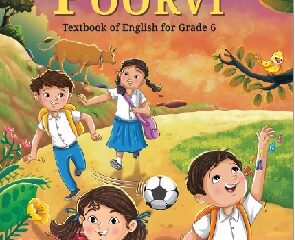
 Education3 weeks ago
Education3 weeks agoNCERT Introduces ‘Poorvi’ For Class 6: A New English Textbook With Indian Focus
-
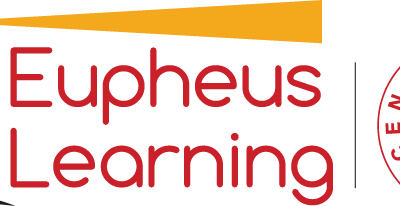
 Education3 months ago
Education3 months agoIndia’s Eupheus Learning Recognised in TIME’s World’s Top EdTech Rising Stars of 2024
-

 Education2 months ago
Education2 months ago10 Summer Safety Tips for Kids During Summer Breaks
-

 Education2 months ago
Education2 months agoWhy Sex Education in Schools is a Battlefield: A Look into Recent Debates and the Path Forward
-

 Education2 months ago
Education2 months agoOpenAI Launches ChatGPT Edu to Revolutionise University Education
-

 Education3 months ago
Education3 months agoQuestioning the Trend of Lavish Farewells- #FarewellFiasco
-

 Education3 months ago
Education3 months agoUNESCO’s Happy Schools Initiative: Placing Happiness at the Heart of Education
-

 Education3 months ago
Education3 months agoKerala Sets National Benchmark with AI Training Programme for 80,000 Teachers
-
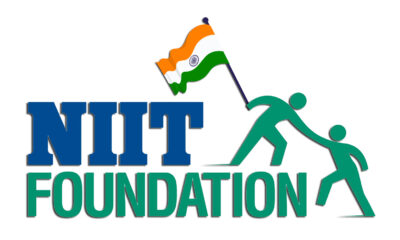
 Education1 month ago
Education1 month agoNIIT Foundation and UNICEF YuWaah Empower 5,000 Women and Girls through Data Literacy Training Programme
-
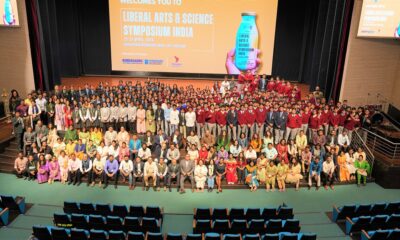
 Education3 months ago
Education3 months agoEmpowering Education: LASSI 2024 Concludes with Success and Inspiration



